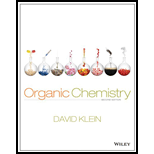
(a)
Interpretation:
The structure should be drawn for each of the given (IUPAC) molecule.
Concept introduction:
Systematic Name :It is standardized name given for a chemical compound in systematic manner. Any organic molecule can be named by using IUPAC(international Union for pure and applied Chemistry)rules. IUPAC names consist of three parts in major namely prefix and word.
Prefix represents the substituent present in the molecule .it can be any alkyl group and carboxylic acid, alcohol etc.…
Suffix represent the substituent present in the
molecule. It can be any
Root word represents the longest continuous carbon skeleton present in the organic molecule.
Common Name it is quite opposite to systematic name which is used for branched groups.
Chirality It refers to a carbon atom in a molecule that contain four different substituents.
Enantiomers: they are chiral molecule whose mirror images are not superimposable.
R&S Nomenclature: It is used to assign the molecule using the CIP rules.
The CIP-rules are as follows:
Select the chiral carbon and assign the number according to the decreasing
If the numbering follows clockwise direction then molecule is term R and if it follows anti-clockwise direction then molecule is termed as S.
(b)
Interpretation:
The structure should be drawn for each of the given (IUPAC) molecule.
Concept introduction:
Systematic Name :It is standardized name given for a chemical compound in systematic manner. Any organic molecule can be named by using IUPAC(international Union for pure and applied Chemistry)rules. IUPAC names consist of three parts in major namely prefix and word.
Prefix represents the substituent present in the molecule .it can be any alkyl group and carboxylic acid, alcohol etc.…
Suffix represent the substituent present in the molecule. It can be any alkene, alkyne, alcohol, carboxylic acid, alcohol etc.…
Root word represents the longest continuous carbon skeleton present in the organic molecule.
Common Name it is quite opposite to systematic name which is used for branched groups.
Chirality It refers to a carbon atom in a molecule that contain four different substituents.
Enantiomers: they are chiral molecule whose mirror images are not superimposable.
R&S Nomenclature: It is used to assign the molecule using the CIP rules.
The CIP-rules are as follows:
Select the chiral carbon and assign the number according to the decreasing atomic mass of atom attached to it.
If the numbering follows clockwise direction then molecule is term R and if it follows anti-clockwise direction then molecule is termed as S.
(c)
Interpretation:
The structure should be drawn for each of the given (IUPAC) molecule.
Concept introduction:
Systematic Name :It is standardized name given for a chemical compound in systematic manner. Any organic molecule can be named by using IUPAC(international Union for pure and applied Chemistry)rules. IUPAC names consist of three parts in major namely prefix and word.
Prefix represents the substituent present in the molecule .it can be any alkyl group and carboxylic acid, alcohol etc.…
Suffix represent the substituent present in the molecule. It can be any alkene, alkyne, alcohol, carboxylic acid, alcohol etc.…
Root word represents the longest continuous carbon skeleton present in the organic molecule.
Common Name it is quite opposite to systematic name which is used for branched groups.
Chirality It refers to a carbon atom in a molecule that contain four different substituents.
Enantiomers: they are chiral molecule whose mirror images are not superimposable.
R&S Nomenclature: It is used to assign the molecule using the CIP rules.
The CIP-rules are as follows:
Select the chiral carbon and assign the number according to the decreasing atomic mass of atom attached to it.
If the numbering follows clockwise direction then molecule is term R and if it follows anti-clockwise direction then molecule is termed as S.
Want to see the full answer?
Check out a sample textbook solution
Chapter 20 Solutions
Organic Chemistry
 ChemistryChemistryISBN:9781305957404Author:Steven S. Zumdahl, Susan A. Zumdahl, Donald J. DeCostePublisher:Cengage Learning
ChemistryChemistryISBN:9781305957404Author:Steven S. Zumdahl, Susan A. Zumdahl, Donald J. DeCostePublisher:Cengage Learning ChemistryChemistryISBN:9781259911156Author:Raymond Chang Dr., Jason Overby ProfessorPublisher:McGraw-Hill Education
ChemistryChemistryISBN:9781259911156Author:Raymond Chang Dr., Jason Overby ProfessorPublisher:McGraw-Hill Education Principles of Instrumental AnalysisChemistryISBN:9781305577213Author:Douglas A. Skoog, F. James Holler, Stanley R. CrouchPublisher:Cengage Learning
Principles of Instrumental AnalysisChemistryISBN:9781305577213Author:Douglas A. Skoog, F. James Holler, Stanley R. CrouchPublisher:Cengage Learning Organic ChemistryChemistryISBN:9780078021558Author:Janice Gorzynski Smith Dr.Publisher:McGraw-Hill Education
Organic ChemistryChemistryISBN:9780078021558Author:Janice Gorzynski Smith Dr.Publisher:McGraw-Hill Education Chemistry: Principles and ReactionsChemistryISBN:9781305079373Author:William L. Masterton, Cecile N. HurleyPublisher:Cengage Learning
Chemistry: Principles and ReactionsChemistryISBN:9781305079373Author:William L. Masterton, Cecile N. HurleyPublisher:Cengage Learning Elementary Principles of Chemical Processes, Bind...ChemistryISBN:9781118431221Author:Richard M. Felder, Ronald W. Rousseau, Lisa G. BullardPublisher:WILEY
Elementary Principles of Chemical Processes, Bind...ChemistryISBN:9781118431221Author:Richard M. Felder, Ronald W. Rousseau, Lisa G. BullardPublisher:WILEY





